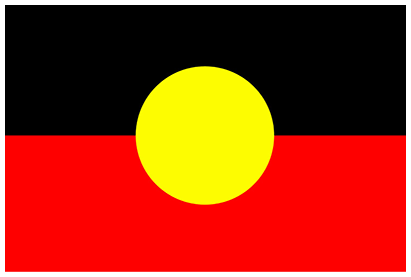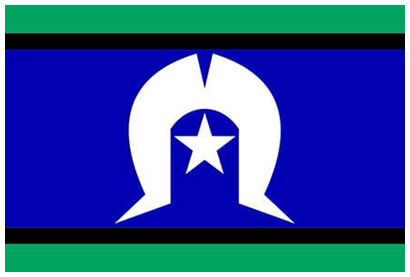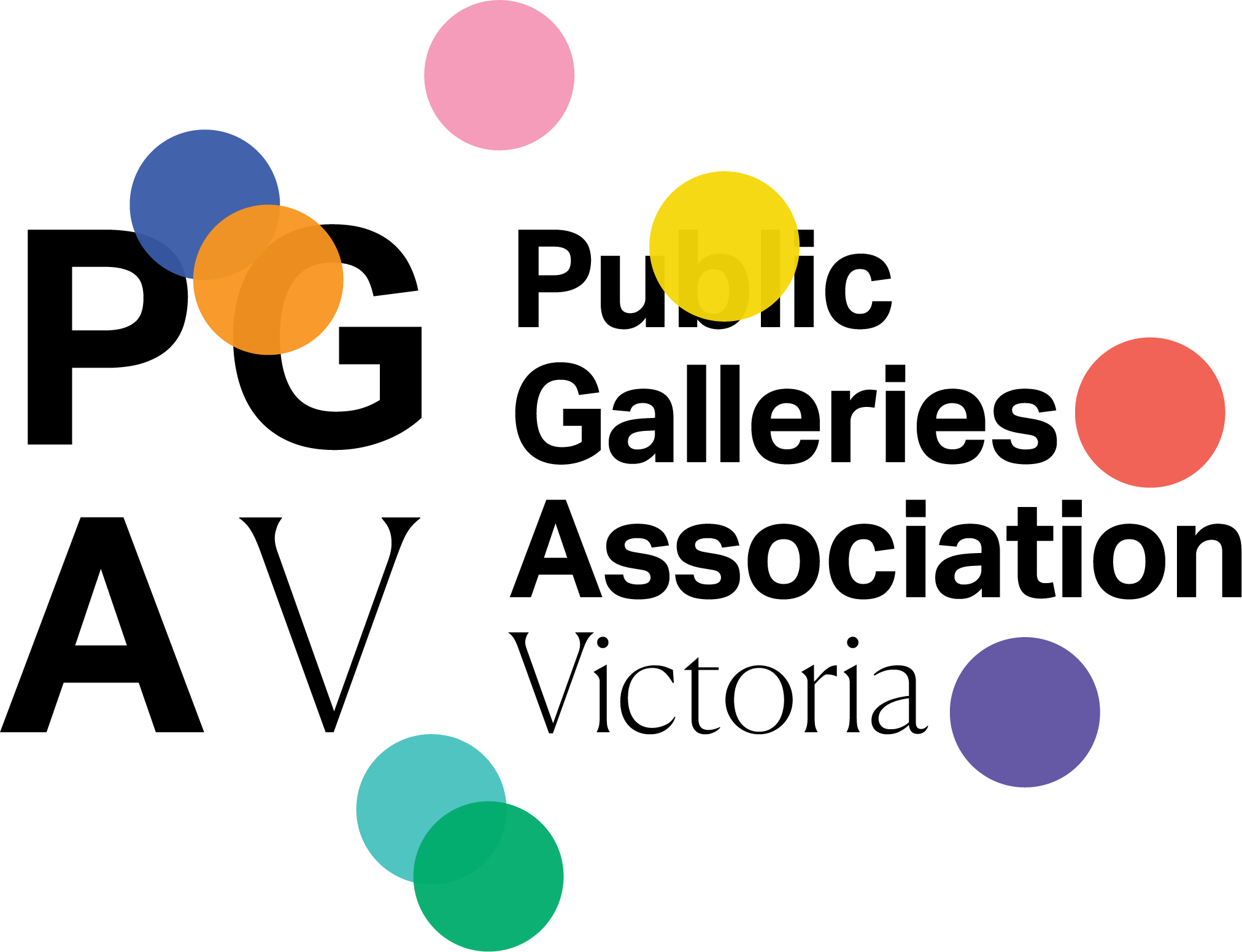Registrar
Professions in the Public Gallery Sector

ainsley gowing
Registrar
Mornington Peninsula Regional Gallery
Image: Ainsley Gowing with Louise Rippert’s works, Forget-me-not, 2020-21 and Black Bindu, 2014, from the exhibition Collection+ Louise Rippert / Steve Carr, 26 March to 31 July 2022, Mornington Peninsula Regional Gallery.
Date: August 2022
Registrar
Registrar: The Registrar ensures objects in the collection are conserved, tracked and appropriately registered. They oversee internal and external loans of objects in the collection. They lead
documentation, cataloguing and storage of the collection and its online presence.
For information about roles within public galleries see the PGAV Fact Sheet: Staffing Levels & Position Titles
How did you get started in your career and what formal qualifications or experience do you have?
It was a chance conversation with MPRG's former Director, Kim Sajet, after I visited a Henry Moore exhibition at the gallery that led me to my first stint of gallery volunteer work during my undergraduate years. I discovered I loved the behind-the-scenes world of a public art gallery. I went on to complete a Bachelor of Arts (Visual Arts) at Monash University (Gippsland), majoring in painting with minors in photography, sculpture and ceramics. In hindsight I wish I had persevered with printmaking – it would have been invaluable given my work with the MPRG works on paper collection.
After completing my university studies in 1994, I undertook more volunteer work under Andrea May Churcher, MPRG's new Curator at the time. Her high standards and drive to present exhibitions and programs based on the gallery's growing works on paper collection inspired me, and so began my ‘apprenticeship’. At Andrea’s suggestion I enrolled in the Graduate Diploma of Museum Studies at Deakin University in 1995 and took up opportunities to further my interest in research, including a work placement at the NGV and an internship at the Queensland Art Gallery. I undertook additional volunteer work assisting with cataloguing Australian prints, drawings and ceramics at the NGV and packing art works at the Koorie Heritage Trust. I then returned to MPRG bringing my new learnings with me, and a few years on took up the role of Curator/Registrar.
What does your role as Registrar encompass?
The core responsibility for the role is the logistics of incoming loans for exhibitions, but also includes aspects of building operations, such as security, climate control and building maintenance. I work part-time and job share the role with my colleague Angie Taylor. Together we ensure the safe handling of works of art (packing, transport and installation) loaned for exhibitions, and liaise with lenders, artists and arts professionals. There is a large volume of loan documentation that accompanies each exhibition. We ensure that loan requirements are met whilst also providing support for the gallery's Education and Public Programs. The role also entails managing outgoing loans from the MPRG collection and requires working closely with Narelle Russo, MPRG's Curator of Collections. We also field research enquiries about past exhibitions and collect information to add to our artist files.
What knowledge and skills do you think are most needed for this role?
The role requires a sound understanding of preventative conservation and the composition of the work of art you are caring for as well as art history. Having a holistic vision of the processes involved in pulling an exhibition together is important to ensuring the safety of the art work. Keen observation skills, a probing curiosity to gather information from various sources, ability to focus for long periods of time and a sustained commitment to accuracy helps feed that holistic approach.
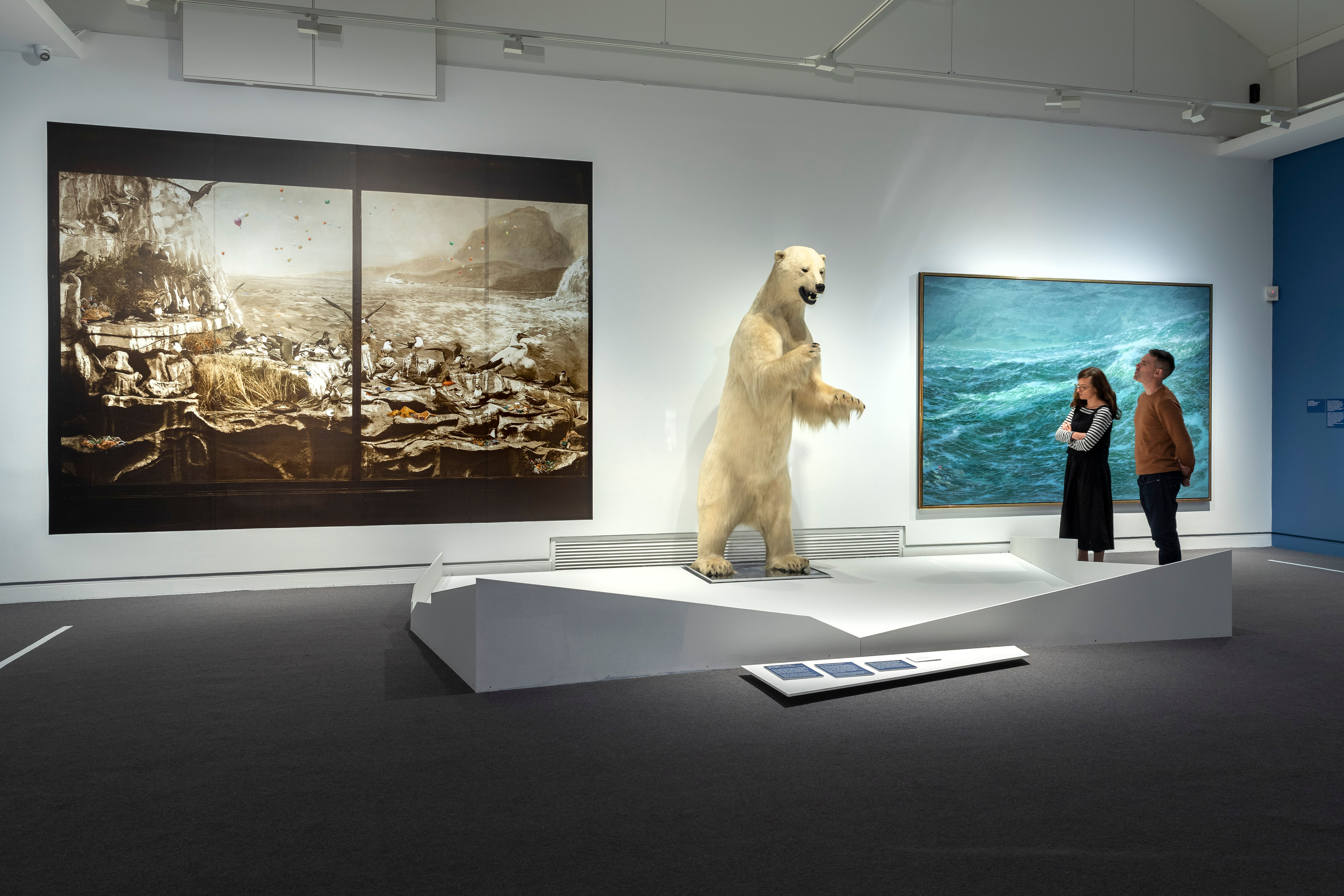
Image: Installation view, Sublime Sea: Rapture and Reality exhibition, 14 December 2019 – 23 February 2020, Mornington Peninsula Regional Gallery. Photo: Mark Ashkanasay. Artwork left: Anne Zahalka’s Sea Bird Colony, Admiralty Rocks with turbulent seas, Lord Howe Island, 2019. Middle: Ursus maritimus – Polar Bear, Melbourne Museum. Right: Tim Storrier's At sea (for Pamela), 2018. Photo: Mark Ashkanasy.
What is one of the strangest things you’ve had to do in your role?
In 2019 we presented the exhibition Sublime Sea: rapture and reality curated by Dr Vivien Gaston. This complex exhibition comprised 84 objects with 58 on loan from 15 different institutions, and included historical and contemporary works of art alongside natural history specimens.
My role required me to undertake many unusual tasks including regular checks for fur loss on a taxidermied polar bear on loan from Melbourne Museum. I worked closely with the museum’s conservation team on various aspects of the loan, including the display of the polar bear and numerous shells and coral. This was an interesting task in a gallery setting as we do not normally handle or show natural history specimens.
Another complex loan was a work by Anne Zahalka titled Sea Bird Colony, Admiralty Rocks with turbulent seas, Lord Howe Island (2019), a photographic print and installation of a preserved sea bird that had swallowed plastic waste and balloons. Prior to entering the gallery the bird and its contents required a period in deep freeze to ensure that no dangerous microorganisms or pests would enter the gallery and put other exhibits, including the polar bear, at risk. I found the condition reporting and continual monitoring to be a strange and sad experience.
What is the most rewarding aspect of your role?
Being a smaller gallery we have the opportunity for frequent contact with visitors. It is wonderful to hear firsthand how much people enjoy the exhibitions and respond personally to works of art on display. Hearing feedback can also assist with forward planning for our program – because ultimately what we do is all about our visitors! Opening events are a great opportunity to publicly acknowledge artists, lenders and various stakeholders who contribute to, and support our exhibitions. Working with lenders, artists, private collectors, as well as colleagues in other institutions is also very rewarding part of the role. One particular highlight for me was when the families of artists Mary Macqueen and Nancy Clifton donated prints by the artists to the MPRG collection following the exhibition Tuesday to Tuesday: Barbara Brash, Nancy Clifton, Mary Macqueen, Lesbia Thorpe that I curated in 2006. I was very proud of the exhibition, and it was a thrill to be offered these prints in appreciation.
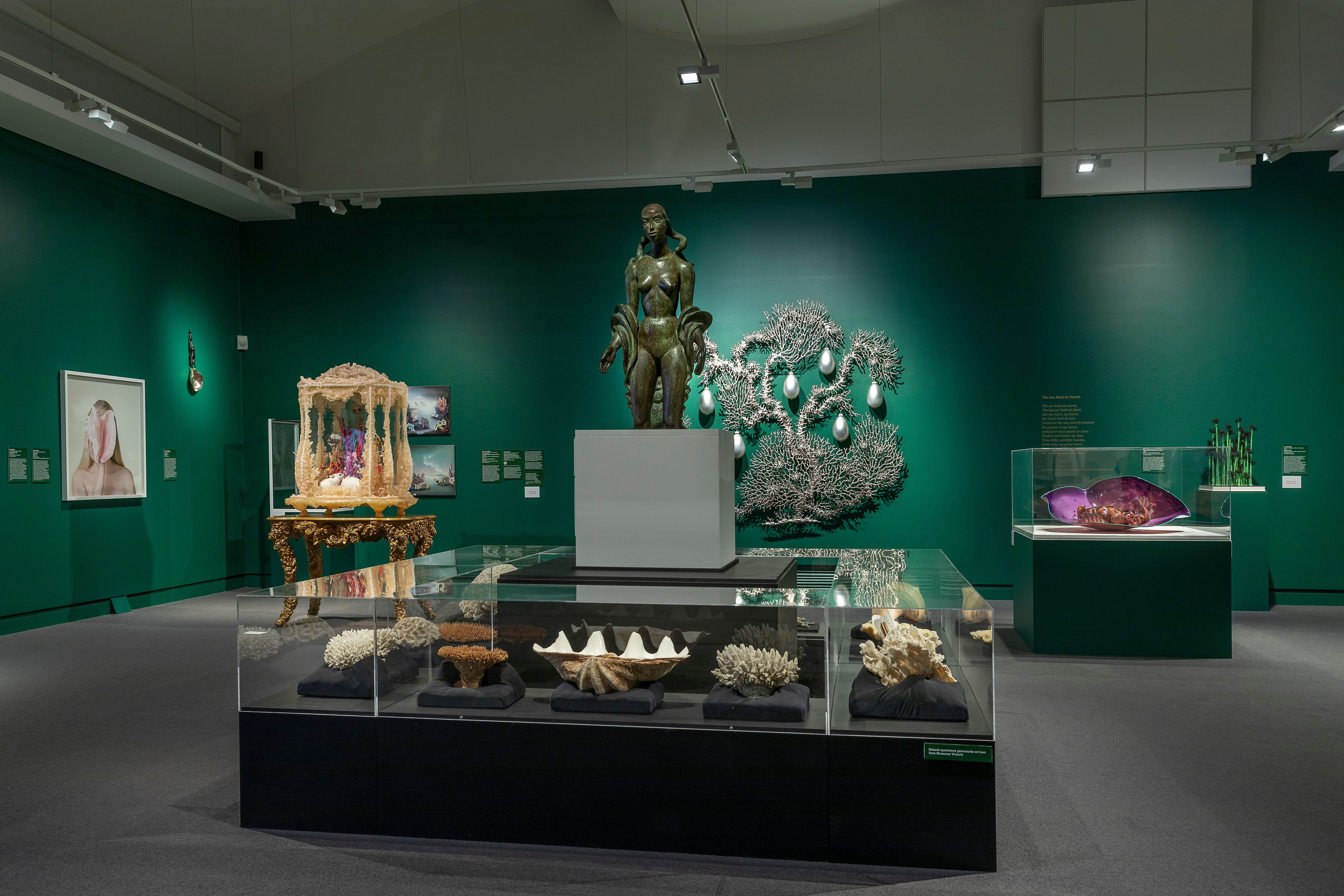
Image: Installation view, Sublime Sea: Rapture and Reality exhibition, 14 December 2019 – 23 February 2020, Mornington Peninsula Regional Gallery. Photo: Mark Ashkanasy.
What has been your career highlight so far?
From a registration perspective, Sublime Sea (2019) was probably the most challenging exhibition that I have worked on, given the number and range of loans. The exhibition had everything! Paintings, prints, sculpture, Chihuly glass, porcelain, textiles, 19th century French toy paper theatre, ship model, film, shells, coral and animals, 500 BCE amphora and bark paintings. It was important that enough time and resources were given to ensure a high standard of care for each and every object on loan.
From a people perspective, I particularly loved working with Oliver Streeton (Arthur Streeton’s grandson). We spent many months working on two exhibitions curated by Oliver and Geoffrey Smith for MPRG, Arthur Streeton: the passionate gardener (2001) and Arthur Streeton and the Australian coast (2004). Oliver was incredibly generous with his time and shared his good humour and many family anecdotes along the way. It was wonderful to work on these exhibitions as during my NGV work placement I had spent time at the State Library of Victoria chasing historical newspaper reviews of Streeton’s exhibitions.
From a fan perspective, staying back late one evening to receive a wooden tea chest from London which had ephemeral materials from the collection of musician Nick Cave AO! Our Senior Curator, Rodney James had curated the amazing exhibition Nick Cave: The Good Son (2002), the impetus being the 1977 drawings by Jenny Watson of Nick and the other Birthday Party band members in the MPRG Collection. To handle and condition report his journals filled with lyrics, quotes, small drawings, photos and collaged images was surreal.
From a personal perspective, it was a hugely rewarding experience to both curate and undertake registration for the Collection+ Louise Rippert/Steve Carr exhibition earlier this year. The exhibition was developed during the 2020 and 2021 lockdowns. These two artists were previously unknown to one another but were both incredibly supportive and trusting in the process over zoom. It was wonderful to exhibit their work together and for them to finally meet in person and present an artist talk at the gallery.
What are the key issues for public galleries in the future?
Many of the issues that public galleries face relate to funding and accessibility. It is a continual process of educating both the public and funding bodies about the importance of the arts to society and of maintaining and growing culture for our collective wellbeing.
From a registration / collection management perspective, storage is a big issue - you can never have enough storage! Limitations with safe storage hamper accessibility and the growth of collections.
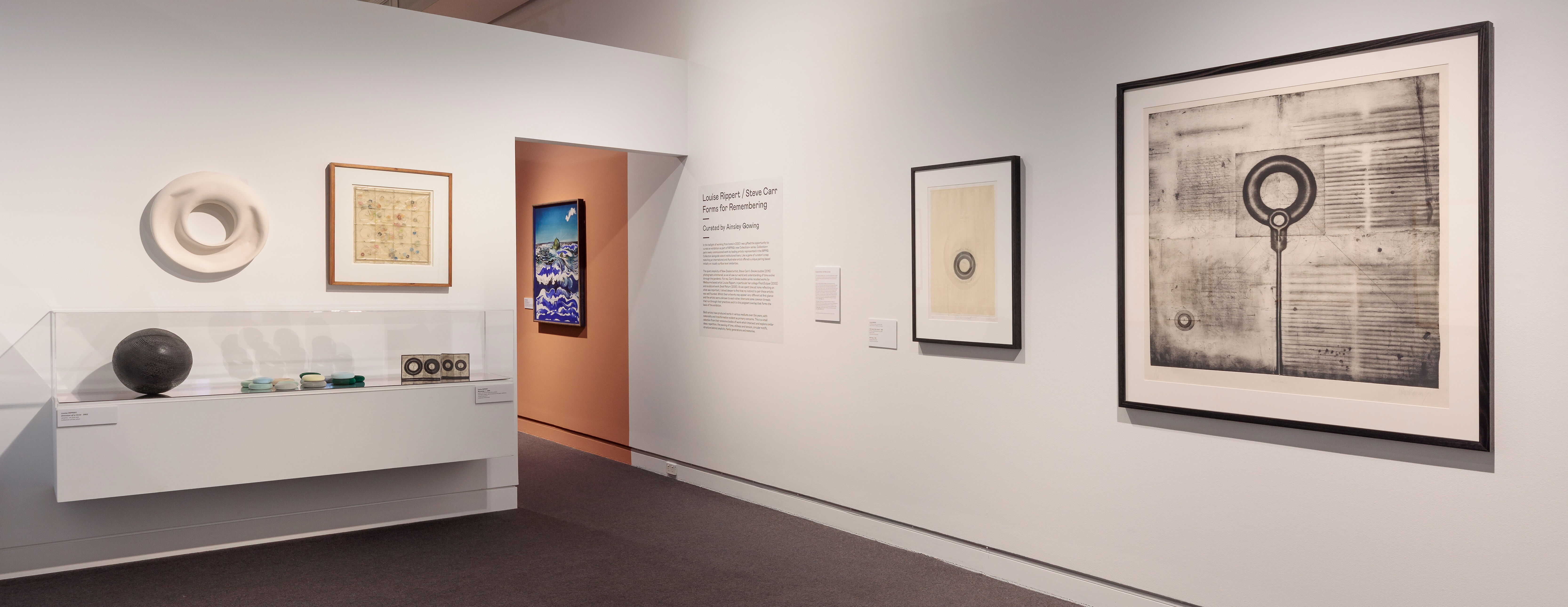
Image: Installation view, Collection+ Louise Rippert / Steve Carr exhibition, 26 March to 31 July 2022, Mornington Peninsula Regional Gallery. Photo: Mark Ashkanasay.
The Public Galleries Association of Victoria (PGAV) acknowledges the Wurundjeri Woi-Wurrung people of the Kulin Nation as the Traditional Owners of the lands where our office is located, and all Traditional Owners of country throughout Victoria and Australia. We recognise Aboriginal and Torres Strait Islander peoples enduring traditions and continuing creative cultures. We pay our respect to Elders past, present and emerging.
We are an LGBTQIA+ friendly organisation that celebrates diversity. We are committed to providing safe, culturally appropriate, and inclusive services for all people, regardless of their ethnicity, faith, disability, sexuality, or gender identity.
